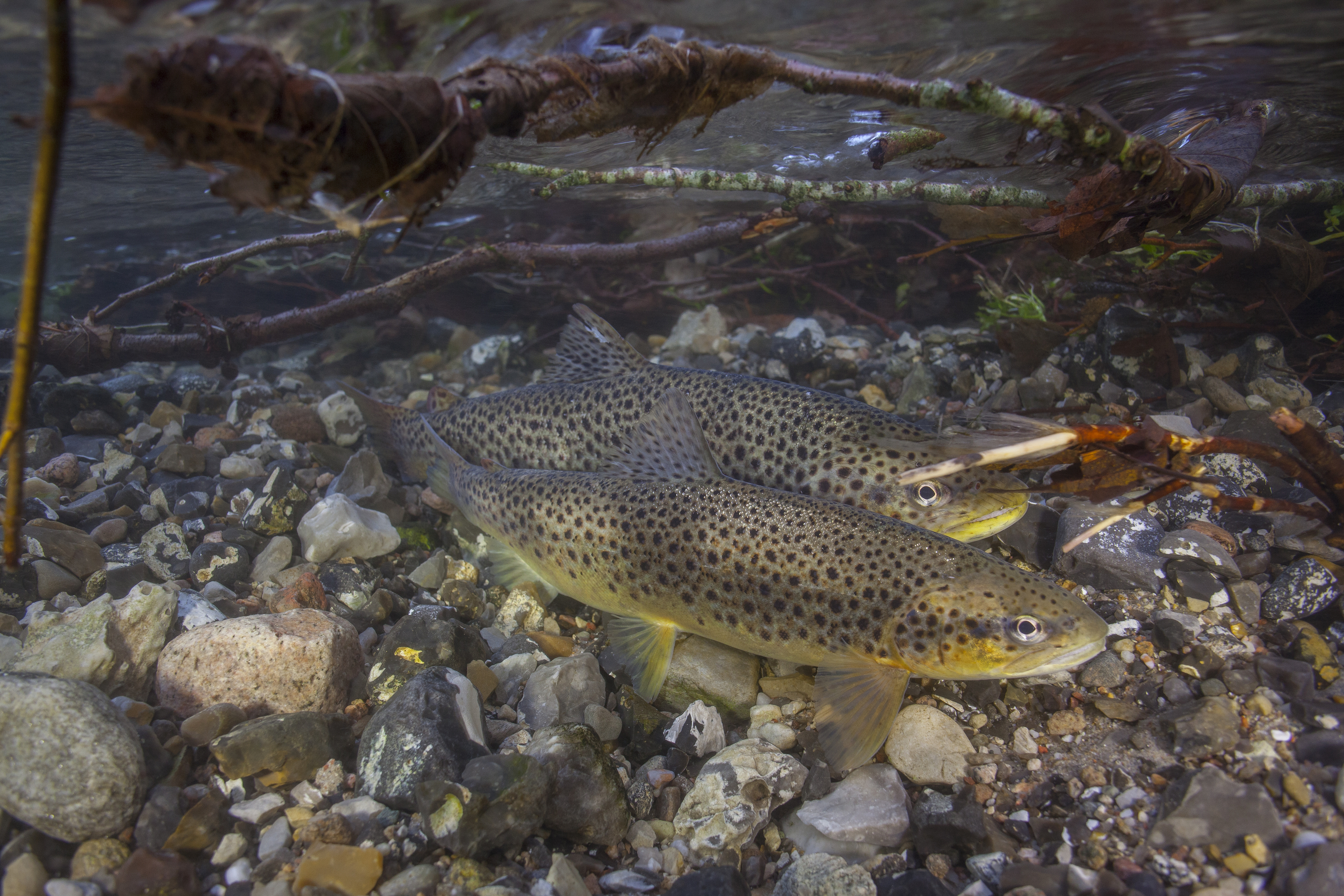Down by the river the trout fishing season is coming to an end, the evenings are perceptibly shorter but the fish are still active and snap eagerly at a well presented fly.
Angling is such a satisfying way of getting close to nature and for me blissful happiness is wading in the middle of my beloved River Devon and with a flick of the wrist sending forth my fly-line in a gentle unfurling arc. I’m part of the river. I can feel the water’s pull around my boots, aware of its power and strength, and its gentler side too.
Then the rod bends and the line tightens; a trout has taken! More times than not, it will be a small fish, perhaps half-a-pound, but the beauty and intensity of pattern inscribed upon these little gems never fails to astound. The brown trout, surely one of the biggest misnomers of them all; a much more appropriate name would be golden red-speckled trout, or burnished copper trout, or something in that vein, for they are a shimmering concoction of every hue imaginable.
But what I admire most about trout is their ability to thrive in the smallest burn or the highest mountain tarn. They are such adaptable fish and no barrier seems insurmountable. I once watched an angler catch trout in Loch nan Eun, a lochan at almost 3,000ft on the southern fringes of the Cairngorms and the fish so determined to snaffle a fly that virtually every cast would result in a take. They were skinny fish, mind you, and I suspect these trout would spend the colder months of the year in a state of near torpor.
Then, of course, there are sea trout, the same species as the brown but instead adopting a different lifestyle by spending some of their time in the sea before returning to our rivers to spawn. The adults are often silvery in colour, a bit like a salmon, but the young ones, or finnock as they are known, are speckled and look similar to a brownie.
These finnock haunt our coastal shallows and I remember once seeing a pair together when snorkelling near Cockburnspath in Berwickshire. They circled around me out of curiosity and were surprisingly confiding fish compared to the adults, which are renowned for their wariness and guile.
Mature sea trout will often run and feed in our rivers at night, presenting a very special challenge for fishermen. The great angler Hugh Falkus enthused about night fly fishing for these flashing bars of silver, describing it thus: “Of all fish and fishing this for me is the very top.” He was surely right, fly fishing in the dark, the ultimate angling skill and so difficult when you can hardly discern your cast. But imagine the excitement when a fish takes the fly!
And how does a trout see that fly in the dark swirling water? They must have the most incredible vision, tuned to the slightest movement or glimmer. Trout are just such fascinating fish, ubiquitous in nature and beautiful by design.
Info
Brown and sea trout will start spawning over the coming weeks. They will pick areas of fast flowing well-oxygenated water over gravel beds, where they will deposit their eggs.










